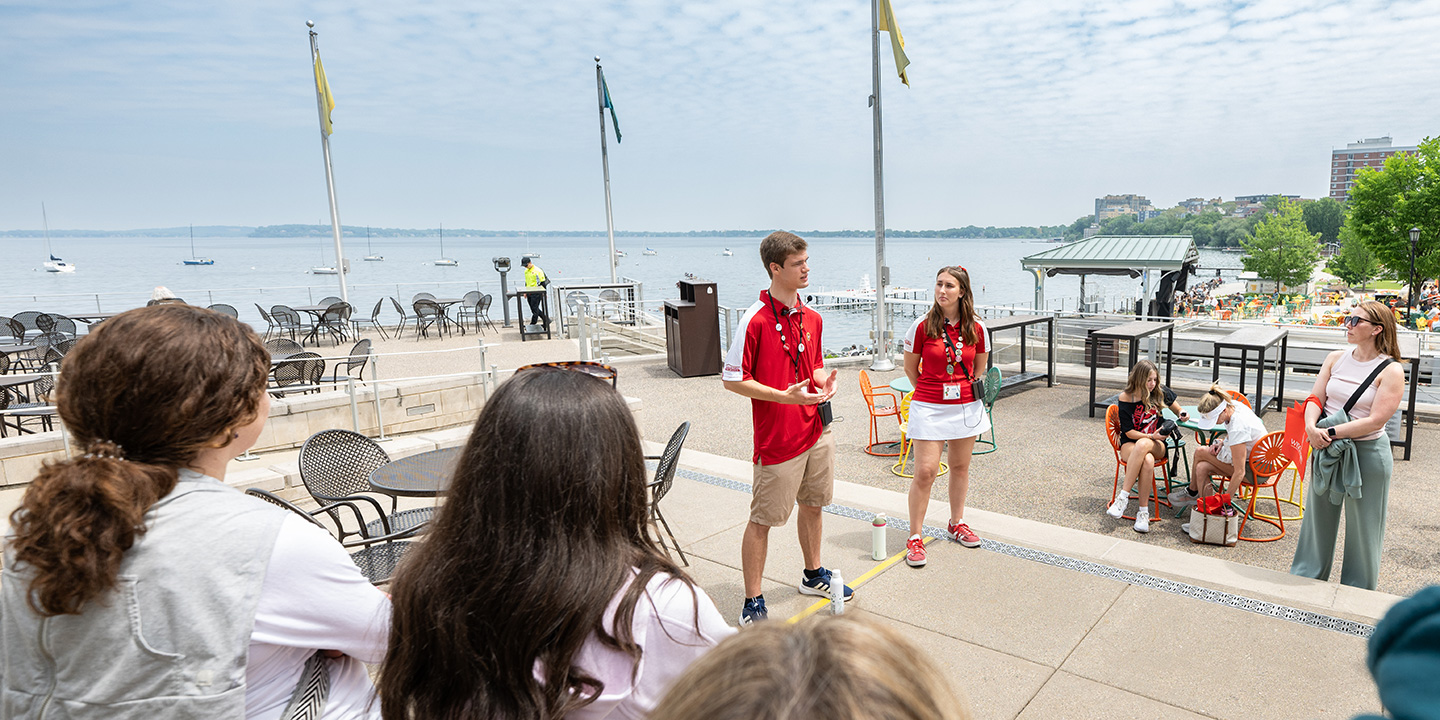
What I Saw on the Campus Tour
A former student guide marvels over new UW–Madison attractions — and all the new ways of showcasing them.
I remember a surprising number of details from the campus tour I took before becoming a Badger.
In 1996, the UW Law Library had just opened its gleaming glass reading room overlooking Bascom Hill. The hill was the heart of my tour that crisp fall day. At the bottom, my guides gestured toward College Library, noting that it had been named one of the country’s best places to find a date. At the top, I learned about “traying,” the tradition of sledding down campus slopes on fiberglass cafeteria trays.
My group wanted to know how much hill climbing was expected of first-year students. A few years later, when I led tours for UW–Madison’s Student Orientation, Advising, and Registration (SOAR), this was still a hot topic. I fielded questions while scaling the mountain backward in my favorite Chuck Taylors and a Bucky-printed bucket hat.
Campus tours have changed a lot in 20-plus years, with new facilities to explore, fresh facts to share, and increased accessibility for guests with disabilities. There’s even a Zoom session where six campus tour guides share their experiences and answer questions about life on campus. For in-person tours, two guides from UW Campus and Visitor Relations lead each group of 15 to 20 guests, covering a third of the campus on foot in 75 minutes. They take turns presenting, then get new partners for the next tour. This makes each tour unique, keeps the guides on their toes, and energizes the tour group.
Though backward-walking guides and the Bascom Hill endurance test are long gone, campus tours are more memorable than ever. I don’t recall much about the students in charge of my inaugural UW tour, but today’s tour-goers get to know their guides almost as well as the campus. The guides’ personal experiences — and personalities — can be a real factor for visitors when choosing a college.
Reading Your Guests
Abby Medhin x’26 wouldn’t be a Badger if not for her tour of UW–Madison. The Milwaukee native was set on attending an out-of-state college but agreed to a tour when her dad urged her to check out the campus.
“The two guys who led it were so enthusiastic about UW–Madison and did a great job explaining student life. I started picturing myself here, which I hadn’t done before,” she says.
The experience inspired Medhin to become a campus tour guide last January. So did her goal of getting comfortable talking to acquaintances. As a future nurse, Medhin knows the value of building rapport with patients, but sometimes anxiety derails her efforts to connect.
 Tour Guide Favorite Fact
Tour Guide Favorite Fact
“The resources at the Bakke Recreation & Wellbeing Center are incredible: napping pods, sports simulators, a teaching kitchen. I also like mentioning that there are free movies at Union South’s Marquee Cinema and that sometimes they haven’t been released yet.”
— Abby Medhin
“Social anxiety has been a factor in my life for a long time. Being a tour guide gives me lots of practice talking to new people, which really helps,” she says.
The experience also helps Medhin navigate the performance anxiety that used to make public speaking unbearable. Rehearsing her tour script has an advantageous side effect: she feels more at ease giving class presentations.
“My friends tell me I’m good at it now, which I can hardly believe,” she says.
I see a little of my 20-year-old self in Medhin, remembering how I used the tours to work on my own stage fright. Her warmth and excitement shine through when she divulges her favorite study spots and the best movies she’s seen at Union South’s Marquee Cinema.
 Tour Guide Favorite Fact
Tour Guide Favorite Fact
“A lot of guests are amazed that ‘Jump Around’ causes a small earthquake at Camp Randall during football games. I love that scientists have measured the effects of thousands of jumping students in this way.”
— Macy Olson
Campus and Visitor Relations employs 75 tour guides each semester, and they memorize a 10-page script outline filled with facts about university history, academics, and resources. They don’t recite it verbatim, however. They enhance it with personal experiences from the classroom and beyond. Guides often share what they’ve learned by studying abroad or participating in student organizations. Many discuss acclimating to campus or working with academic advisers. The challenge is choosing the right stories for your audience.
When representatives from a Thai university joined one of Medhin’s tours, for example, she asked them about the ways their institution resembled and differed from the UW. Then she used this information to customize their experience. Medhin highlighted organizations that might help Thai students feel at home and spent extra time explaining things that might be unfamiliar, including the way classes are structured and the role of academic advising.
“Reading your guests — learning who they are and what they need — is a huge part of the job,” she explains.
Fascinating Factoids
Sometimes an energy boost is what’s needed most. I took a morning tour last spring to learn about the latest approach to showcasing campus (see sidebar), and a few people in the group yawned as they introduced themselves. The leaders — seasoned guide Emily Mihalovich x’26 and knowledgeable newcomer Lucas Liske x’27 — noticed this and took action. Soon their witty quips and fascinating factoids had us laughing and asking questions.
Mihalovich, a finance and accounting major from the Phoenix area, used colorful descriptions to entertain and educate. While discussing housing and safety, she called the residence halls on the west side of campus “the cheapest lakeshore property you’ll ever have.” Ears perked up when Liske, a communications and psychology major from Medford, Wisconsin, mentioned that he plays sax in the UW Marching Band. Soon he was tackling their questions about Badger football games.
My group passed by a Chemistry Building classroom, strolled up North Charter Street, and walked through Grainger Hall. A dozen other groups followed the same route at the same time, but we didn’t crash into each other. Every group got its own spot at each destination. It was a complicated dance, but the guides choreographed it perfectly.
“It can be tricky to find places to stand so guests can see everything, especially in the summer, when we have more tours going at once,” Medhin says. “You have to imagine things from their perspective and remember that they may not have seen the campus before.”
 Tour Guide Favorite Fact
Tour Guide Favorite Fact
“People love hearing about the different ways students use Lake Mendota. I’ve kayaked, ice-skated, and polar-plunged there, and I talk about all of it on my tours.”
— Emily Mihalovich
Knowing shady spots to rest and where to hang out during thunderstorms is also essential, since most of the tour is outdoors. Plus, it’s wise to check in with the group in case someone needs a breather or a bathroom break. Liske made sure everybody was comfortable as we approached Library Mall.
Sometimes a more complicated challenge arises. According to Macy Olson x’26, who supervises fellow student guides, training is a valuable tool for navigating these situations.
“If a guest asks about something not so positive — maybe college tuition getting more expensive — it’s important for guides to give honest answers,” she says, adding that a little diplomacy can go a long way. This echoes the advice Zola Dincin Schneider ’46 shares in the popular Campus Visits and College Interviews: A Complete Guide for College-Bound Students and Their Families, which insists that the best type of campus tour guide “speaks from the heart, is candid, and answers questions without hiding the true facts.”
Unlike my UW campus tour in 1996, this one didn’t mention Library Mall’s history of student demonstrations. Though I missed that discussion, I appreciated the new ways the guides addressed student engagement, weaving it into descriptions of campus organizations and volunteer opportunities.
During their training, the guides give mock tours peppered with various disruptions, from loud noises to strangers trying to join the group.
“We learn to be very aware of our surroundings and adapt quickly,” Medhin says. “We want everyone on the tour to be safe, comfortable, and focused on what the campus has to offer.”
“Loved the Tour So Much”
Leading tours is a chance to turn visitors’ vague ideas about the UW into vivid impressions. Sometimes a tour helps them embrace a possibility they hadn’t considered, as in Medhin’s case. Other times, it provides a sense of belonging that they haven’t found elsewhere. Olson witnessed this phenomenon while leading a tour for a middle-school group.
“One of the students asked me about LGBTQ resources,” she recalls. “After I shared what he needed, he said, ‘This is so helpful and makes me feel better about going here.’ That made me feel really good, and I’m so glad he felt comfortable asking me for this information.”
Olson, a social work and legal studies major from Freeport, Illinois, is considering careers in advocacy, counseling, and human services. Creating an atmosphere where people can explore difficult questions is key in all these fields, and supervising other guides has helped her hone the skill.
“Being a new guide can be intimidating, so we try to help everyone feel truly welcome and make them want to come to work each day,” she says. “We’ve also built a strong feedback culture, one where it’s normal to ask questions and where we’re constantly thinking about how to improve.”
 Tour Guide Favorite Fact
Tour Guide Favorite Fact
“I talk about the different sports and outdoor activities students can try. I went curling during the Winter Carnival my first year here and ended up on a competitive curling team.”
— Lucas Liske
Like Medhin, many students apply to be guides because they want to strengthen a skill set or rise to a challenge.
Liske hopes to become a more polished presenter. The tour-guide experience is quite different from his previous job at a small-town cheese-packaging factory.
“I spent last summer moving 40-pound blocks of cheese, so I decided to spend this summer talking with people,” he says.
Meanwhile, Medhin is realizing just how impactful she can be. She recalls a woman sprinting toward her during a recent tour stop — a mom from a tour she’d given the previous winter.
“She told me her son loved the tour so much that he couldn’t talk about any other university afterward. It turned out that he was attending SOAR that day,” Medhin recalls. “I felt so proud that I was part of the reason he chose UW–Madison.”
Jessica Steinhoff ’01 can still walk up Bascom Hill backward.
Published in the Winter 2025 issue
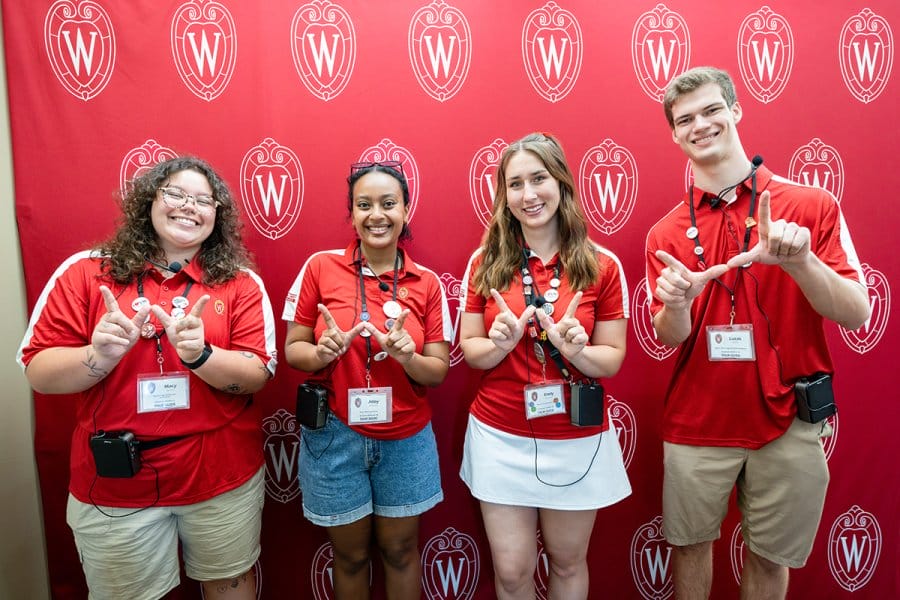
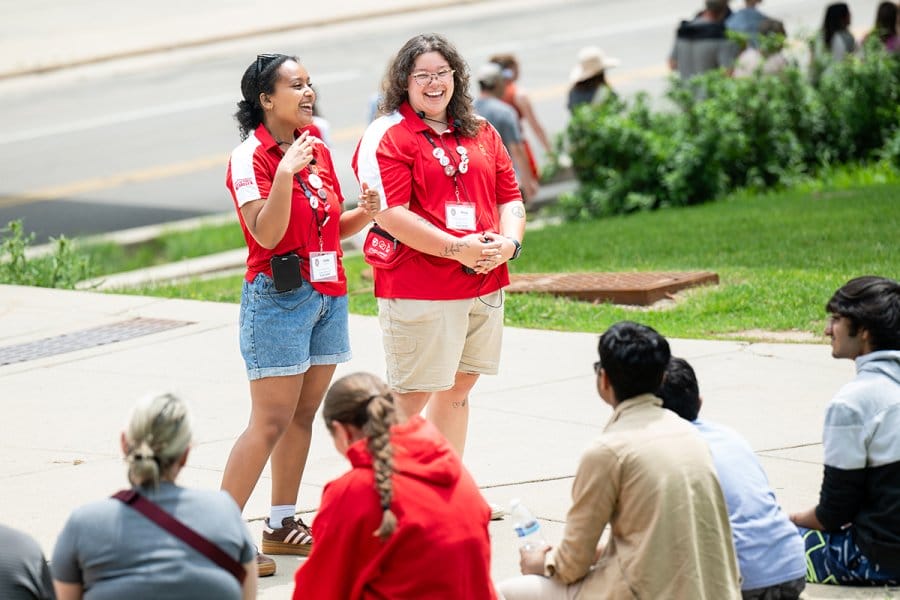
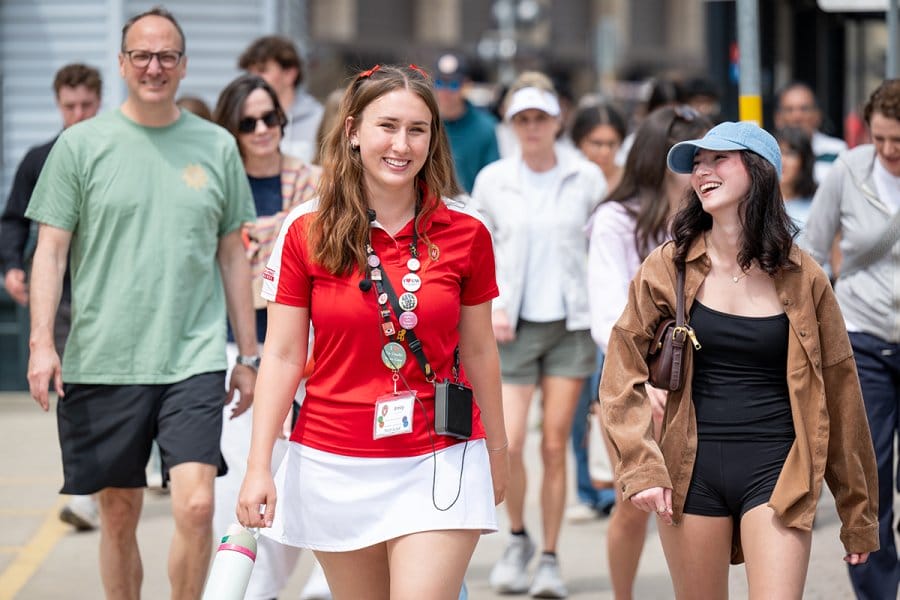
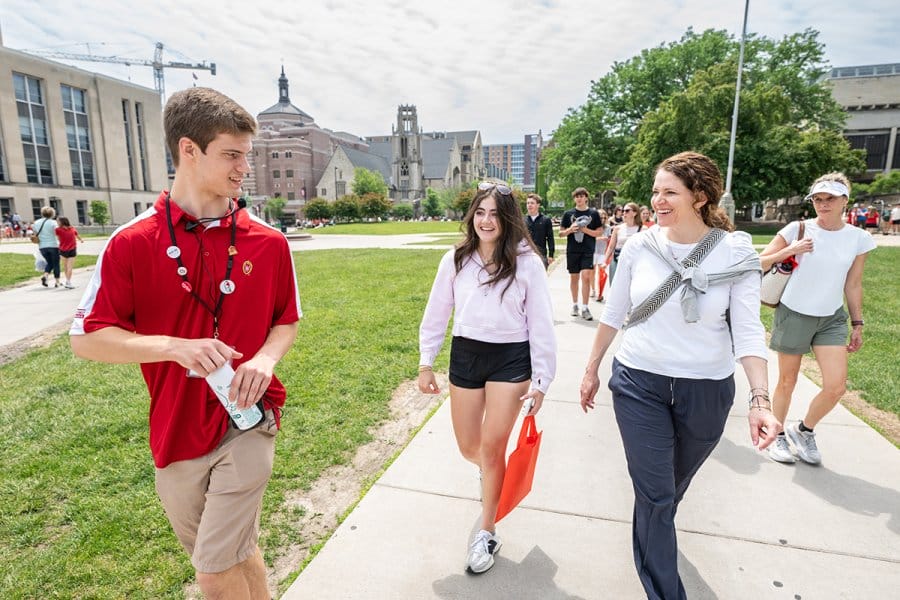

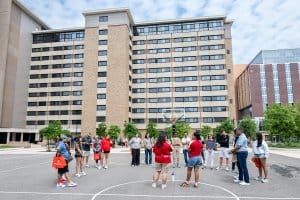
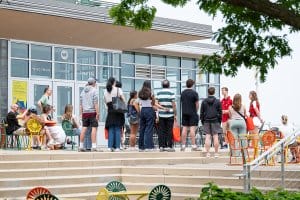
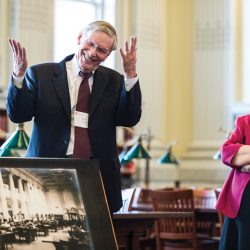


Comments
No comments posted yet.